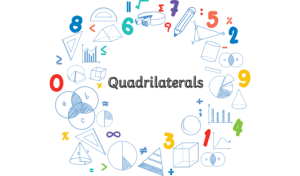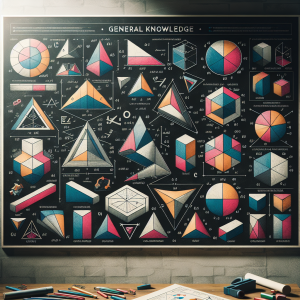2 D Shapes
Learning 2D shapes provides a foundational understanding of geometry and spatial reasoning, critical skills in mathematics. This knowledge allows students to recognize and categorize shapes by their properties, such as the number of sides and angles, fostering analytical thinking. Understanding 2D shapes is not only vital for mathematical literacy but also for its applications in real life. From architecture and engineering to design and art, the ability to comprehend and utilize shapes is key to innovation and problem-solving. Moreover, learning about 2D shapes lays the groundwork for more advanced concepts in geometry, including 3D shapes, symmetry, and tessellation. It also enhances visual perception skills, which are essential for everyday tasks such as reading maps and understanding symbols. In essence, mastering 2D shapes is a stepping stone to broader mathematical knowledge and practical skills that apply across various aspects of life and different career paths.
Learning about quadrilaterals is important because they are shapes we see and use every day! A quadrilateral is any shape with four sides, like squares, rectangles, and trapezoids. Knowing about these shapes helps us understand the world around us. For example, the screen you watch TV on is a rectangle, and the kite you fly has the shape of a quadrilateral.
By learning about quadrilaterals, you can recognize and name these shapes in different objects. This helps you in art, design, and even in building things. Plus, knowing shapes is a fun way to practice math skills like counting sides and angles. It also helps you solve puzzles and play games. Understanding quadrilaterals makes you better at math and helps you see the world in a new, interesting way!
Learning 2D shapes provides a foundational understanding of geometry and spatial reasoning, critical skills in mathematics. This knowledge allows students to recognize and categorize shapes by their properties, such as the number of sides and angles, fostering analytical thinking. Understanding 2D shapes is not only vital for mathematical literacy but also for its applications in real life. From architecture and engineering to design and art, the ability to comprehend and utilize shapes is key to innovation and problem-solving. Moreover, learning about 2D shapes lays the groundwork for more advanced concepts in geometry, including 3D shapes, symmetry, and tessellation. It also enhances visual perception skills, which are essential for everyday tasks such as reading maps and understanding symbols. In essence, mastering 2D shapes is a stepping stone to broader mathematical knowledge and practical skills that apply across various aspects of life and different career paths.
Learning 2D shapes provides a foundational understanding of geometry and spatial reasoning, critical skills in mathematics. This knowledge allows students to recognize and categorize shapes by their properties, such as the number of sides and angles, fostering analytical thinking. Understanding 2D shapes is not only vital for mathematical literacy but also for its applications in real life. From architecture and engineering to design and art, the ability to comprehend and utilize shapes is key to innovation and problem-solving. Moreover, learning about 2D shapes lays the groundwork for more advanced concepts in geometry, including 3D shapes, symmetry, and tessellation. It also enhances visual perception skills, which are essential for everyday tasks such as reading maps and understanding symbols. In essence, mastering 2D shapes is a stepping stone to broader mathematical knowledge and practical skills that apply across various aspects of life and different career paths.
Assessing yourself after learning shapes in maths is crucial for several reasons. Firstly, it helps to reinforce understanding and retention of geometric concepts, ensuring that the knowledge is deeply ingrained. Self-assessment allows you to identify areas where you may need further practice or clarification, helping to pinpoint specific shapes or properties that are challenging. It also provides an opportunity to apply learned concepts to different problems, enhancing problem-solving skills and logical thinking. Additionally, self-assessment fosters self-directed learning and confidence, as it enables you to track your progress and see improvements over time. This reflective practice encourages a proactive approach to learning, making it easier to build upon foundational knowledge in future, more complex mathematical studies. Ultimately, regular self-assessment aids in achieving a comprehensive and practical understanding of shapes, which is essential for success in both academic and real-world applications.
3 D Shapes
Learning about 3D shapes is crucial in mathematics because it enriches spatial thinking and understanding of the world around us. This knowledge is foundational in grasping how different shapes can be identified, categorized, and used in various contexts. Recognizing and understanding 3D shapes help students visualize and solve real-world problems, from constructing buildings to packaging design, where shapes must be manipulated and fit together in efficient ways. It also lays the groundwork for more complex mathematical concepts, such as volume, surface area, and geometry, which are essential for careers in engineering, architecture, design, and technology. Furthermore, learning about 3D shapes enhances cognitive development by improving problem-solving skills, creativity, and logical reasoning. It encourages students to observe their environment with a critical eye, understanding the structure and relationship between objects, which is a valuable skill throughout life and in diverse professional fields.
Learning about 3D shapes is crucial in mathematics because it enriches spatial thinking and understanding of the world around us. This knowledge is foundational in grasping how different shapes can be identified, categorized, and used in various contexts. Recognizing and understanding 3D shapes help students visualize and solve real-world problems, from constructing buildings to packaging design, where shapes must be manipulated and fit together in efficient ways. It also lays the groundwork for more complex mathematical concepts, such as volume, surface area, and geometry, which are essential for careers in engineering, architecture, design, and technology. Furthermore, learning about 3D shapes enhances cognitive development by improving problem-solving skills, creativity, and logical reasoning. It encourages students to observe their environment with a critical eye, understanding the structure and relationship between objects, which is a valuable skill throughout life and in diverse professional fields.
Learning about 3D shapes is crucial in mathematics because it enriches spatial thinking and understanding of the world around us. This knowledge is foundational in grasping how different shapes can be identified, categorized, and used in various contexts. Recognizing and understanding 3D shapes help students visualize and solve real-world problems, from constructing buildings to packaging design, where shapes must be manipulated and fit together in efficient ways. It also lays the groundwork for more complex mathematical concepts, such as volume, surface area, and geometry, which are essential for careers in engineering, architecture, design, and technology. Furthermore, learning about 3D shapes enhances cognitive development by improving problem-solving skills, creativity, and logical reasoning. It encourages students to observe their environment with a critical eye, understanding the structure and relationship between objects, which is a valuable skill throughout life and in diverse professional fields.
Learning about 3D shapes is crucial in mathematics because it enriches spatial thinking and understanding of the world around us. This knowledge is foundational in grasping how different shapes can be identified, categorized, and used in various contexts. Recognizing and understanding 3D shapes help students visualize and solve real-world problems, from constructing buildings to packaging design, where shapes must be manipulated and fit together in efficient ways. It also lays the groundwork for more complex mathematical concepts, such as volume, surface area, and geometry, which are essential for careers in engineering, architecture, design, and technology. Furthermore, learning about 3D shapes enhances cognitive development by improving problem-solving skills, creativity, and logical reasoning. It encourages students to observe their environment with a critical eye, understanding the structure and relationship between objects, which is a valuable skill throughout life and in diverse professional fields.
Learning about 3D shapes is crucial in mathematics because it enriches spatial thinking and understanding of the world around us. This knowledge is foundational in grasping how different shapes can be identified, categorized, and used in various contexts. Recognizing and understanding 3D shapes help students visualize and solve real-world problems, from constructing buildings to packaging design, where shapes must be manipulated and fit together in efficient ways. It also lays the groundwork for more complex mathematical concepts, such as volume, surface area, and geometry, which are essential for careers in engineering, architecture, design, and technology. Furthermore, learning about 3D shapes enhances cognitive development by improving problem-solving skills, creativity, and logical reasoning. It encourages students to observe their environment with a critical eye, understanding the structure and relationship between objects, which is a valuable skill throughout life and in diverse professional fields.
Multiplication
Division
Division is a fundamental mathematical operation crucial for daily life and various fields. It enables us to evenly distribute resources, calculate rates, and understand proportions. For example, dividing food among family members ensures fair sharing, while division in finance helps allocate budgets and manage expenses efficiently. In science and engineering, division is used to analyze data, solve equations, and understand relationships between variables.
Learning division develops critical thinking and problem-solving skills, fostering logical reasoning. It lays the foundation for more advanced mathematical concepts like fractions, ratios, and algebra. Understanding division also enhances our ability to interpret and engage with real-world situations, from cooking recipes to interpreting statistical data. Thus, mastering division is essential not only for academic success but also for making informed decisions in everyday life, contributing to personal and professional growth.
Fractions
Fractions represent parts of a whole and are expressed as the ratio of two numbers: the numerator (top number) and the denominator (bottom number). For instance, in the fraction 3/4, 3 is the numerator and 4 is the denominator, meaning three out of four equal parts. Learning fractions is essential as they are foundational in mathematics, facilitating the understanding of more complex concepts such as ratios, proportions, and percentages. They are practical in everyday life, aiding in tasks like cooking, dividing items evenly, and understanding discounts. Mastery of fractions enhances problem-solving skills, logical thinking, and the ability to interpret data, which are valuable in both academic and real-world contexts.






